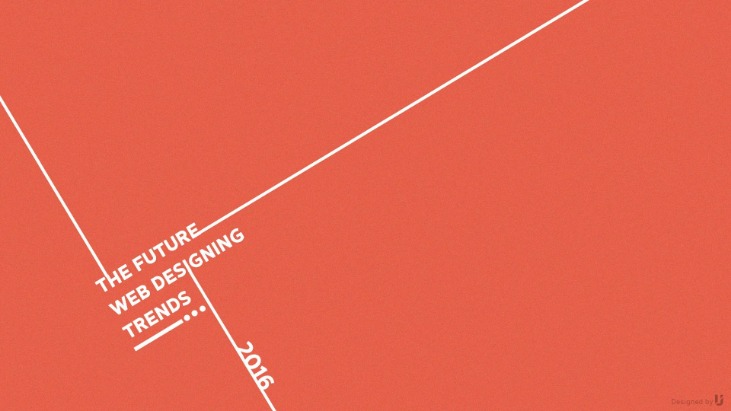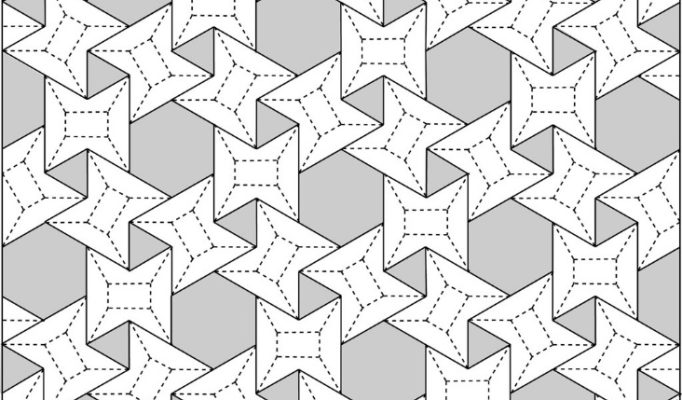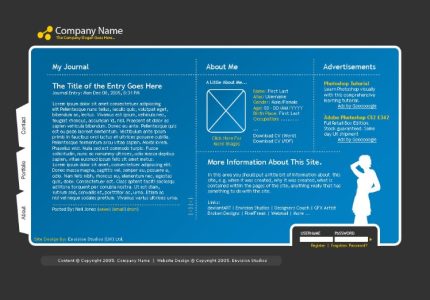Factors Influencing Website Design Costs
Understanding the factors that influence website design costs is essential for businesses and individuals planning to create or update their online presence. Several key elements, such as complexity, features, design quality, and developer expertise, play a significant role in determining the overall expenses. By examining these factors, clients can better estimate their budget and make informed decisions to achieve their desired website outcome.
Complexity of Design
The complexity of design is a significant factor influencing the overall cost of website development. Simple websites with basic layouts and limited features typically cost less, while more complex designs that incorporate custom graphics, animations, and intricate user interfaces tend to require additional time and resources. Advanced functionality, such as e-commerce capabilities, interactive elements, or personalized user experiences, further increases the complexity and associated costs. Additionally, adopting responsive designs that function seamlessly across various devices adds to the development effort and expense. Overall, the more detailed and sophisticated the design, the higher the investment needed to bring the website to life.
Number of Pages
The number of pages in a website significantly impacts the overall design cost, as more pages typically require additional planning, content creation, and customization. Larger websites with numerous pages often involve more complex navigation structures and design consistency considerations, which can increase the workload and associated expenses. Additionally, each page may need unique design elements or layouts, further influencing the cost. Therefore, when estimating website design expenses, it is essential to consider the total number of pages to ensure accurate budgeting and resource allocation.
Customization Level
The level of customization required for a website significantly influences its overall design costs. Highly customized websites involving unique layouts, bespoke graphics, and tailor-made features demand more time and expertise from designers and developers, leading to higher expenses. Conversely, using pre-designed templates or themes tends to reduce costs as it minimizes the amount of development work needed. The complexity of the website’s functionality, such as e-commerce capabilities, interactive elements, or integrations with third-party services, further affects the cost, with more sophisticated features requiring additional resources. Ultimately, the desired personalization and specific features directly impact the budget, making customization a key factor in determining overall website design costs.
Features and Functionalities
The cost of website design is influenced by a variety of factors that determine the overall features and functionalities of the site. One primary factor is the complexity of the design; more intricate layouts with custom graphics and animations typically require more time and resources, increasing the cost. Additionally, the number of pages and the depth of content play a significant role, as larger sites with extensive content need more development effort. The desired features, such as e-commerce capabilities, interactivity, and integrations with third-party services, also impact costs since advanced functionalities often require specialized coding and testing. The choice between using a ready-made template or a fully custom design affects the pricing as well, with custom designs being more resource-intensive. Furthermore, the level of responsiveness and mobile optimization needed for various devices influences design expenses. Lastly, ongoing maintenance, updates, and the need for future scalability can also contribute to the overall cost, making it essential to consider both current and future requirements when planning a website budget.
Design Agency or Freelancer Selection
Understanding the factors that influence website design costs is essential when determining how much to allocate for your project. Various elements such as complexity, features, and the choice between a design agency or a freelancer can significantly impact the overall expense.
Factors influencing website design costs include:
- Project Complexity: More intricate designs with custom graphics and functionality tend to cost more.
- Number of Pages: A larger website with numerous pages requires additional time and resources.
- Design Customization: Fully custom designs are more expensive than templates or semi-custom options.
- Features and Functionality: Incorporating e-commerce, booking systems, or interactive elements increases costs.
- Content Creation: Original content, images, and videos add to the budget.
- Responsive Design: Ensuring compatibility across devices can affect the price.
- Maintenance and Support: Ongoing updates and technical support are additional expenses.
When selecting between a design agency or a freelancer, consider these factors:
- Experience and Portfolio: Agencies often have larger teams with diverse expertise, while freelancers may offer specialized skills.
- Cost Structure: Freelancers may offer more affordable rates, but agencies might provide comprehensive packages.
- Project Management: Agencies typically have established processes and dedicated project managers.
- Flexibility and Communication: Freelancers may be more direct and flexible, but agencies can offer more resources and redundancy.
- Turnaround Time: Agencies might deliver faster due to larger staff, whereas freelancers may have longer timelines.
- Quality Assurance: Agencies often have quality control procedures, which can ensure a higher standard of work.
Average Cost Range for Website Design
Understanding the average cost range for website design is essential for businesses and individuals planning to establish an online presence. The expenses can vary widely depending on the complexity, features, and customization levels needed for the website. By exploring typical price ranges, you can better budget and make informed decisions when hiring designers or agencies to create your ideal website.
Basic Website
The average cost for designing a basic website typically ranges from $500 to $3,000. This estimate covers simple layouts, fundamental features, and minimal customization. The actual price can vary depending on factors such as the complexity of design, the number of pages, and whether you hire a freelance designer or a professional agency. Basic websites are ideal for small businesses, startups, or personal projects looking for a professional online presence without extensive functionalities.
Standard Business Website
The average cost range for designing a standard business website typically falls between $3,000 and $10,000. This range depends on various factors such as complexity, design customization, functionality requirements, and the experience level of the web designer or agency. Basic websites with minimal features tend to be more affordable, while more complex sites with custom designs, integrations, and added functionalities will generally be on the higher end of the spectrum. It’s important for businesses to evaluate their specific needs and budget when considering website design options to ensure they select a solution that aligns with their goals.
E-Commerce Website
The average cost for designing a website, especially an e-commerce platform, can vary significantly depending on factors such as complexity, features, design quality, and the expertise of the developer or agency involved. Generally, small to medium-sized e-commerce websites may range from $5,000 to $20,000. Basic platforms with standard features tend to fall on the lower end of this spectrum, while more customized or large-scale sites with advanced functionalities can reach higher costs. For highly customized or enterprise-level e-commerce websites, the price could be $50,000 or more. It’s important to consider ongoing expenses such as hosting, maintenance, and updates when planning a budget for website design.
Custom Corporate Website
The average cost range for designing a custom corporate website typically falls between $3,000 and $50,000, depending on the complexity, features, and the level of customization required. Basic websites with standard templates and simple layouts tend to cost on the lower end, while fully custom designs with advanced functionality and tailored branding can push the price higher. Factors such as the number of pages, integrations with third-party tools, responsive design, and the experience of the design team also influence the overall cost. It’s important for businesses to consider their specific needs and budget when planning a website project.
Cost Breakdown Components

Understanding the cost breakdown components for website design is essential to ensure transparency and make informed decisions. These components detail the various expenses involved in creating a professional website, from initial planning to final launch. By examining each element, businesses and individuals can better allocate their budget and identify areas where costs may vary. This overview provides a clear understanding of what factors contribute to the overall price of website design services.
UX/UI Design
The cost of website design can vary significantly based on several key components, especially when considering UX/UI design. Understanding these elements helps in estimating the overall budget needed to create an effective and user-friendly website.
The primary components affecting the cost breakdown include:
- Research and Planning: This phase involves understanding client needs, target audience, and project goals, which lays the foundation for the design process.
- Wireframing and Prototyping: Creating sketches or digital prototypes to visualize the layout and user flow before final design implementation.
- Design Mockups: Developing detailed visual representations of the website, including color schemes, typography, and interface elements.
- UX Design: Focuses on optimizing user experience through intuitive navigation, usability testing, and ensuring accessibility standards.
- UI Design: Geared towards crafting aesthetically appealing interfaces that align with branding and enhance user engagement.
- Revisions and Finalization: Incorporating client feedback and refining the design to meet expectations before development.
- Additional Services: Such as animations, custom graphics, or interactive elements that can add to the overall cost.
Overall, the budget for website design, especially with a focus on UX/UI, can range from a few hundred to several thousand dollars depending on the complexity, features, and level of customization required.
Development and Coding
In determining the cost of website design, the development and coding phase is a critical component that significantly influences the overall budget. This includes the time and effort required to build the website’s structure, functionality, and interactive features. Skilled developers use various programming languages such as HTML, CSS, JavaScript, and backend technologies to create a seamless user experience.
The complexity of the website, such as whether it is a simple informational site or a feature-rich e-commerce platform, directly impacts the coding process. Custom functionalities, integrations with third-party services, and responsive design for different devices add to the development time and cost. Additionally, employing frameworks and content management systems (CMS) can either streamline or extend development efforts, affecting pricing accordingly.
Overall, development and coding constitute a substantial portion of website design costs, influenced by the project scope, technical requirements, and the expertise level of the development team. Proper planning and clear specifications are essential to accurately estimate these components and ensure the project stays within budget.
Content Creation
When estimating the cost of website design, understanding the components of content creation is essential, as it significantly impacts the overall budget. Content creation involves generating engaging and relevant material that enhances user experience and supports branding objectives.
- Content Strategy Development: Planning the type, tone, and structure of content to align with business goals.
- Copywriting: Creating clear, compelling text for web pages, product descriptions, and calls to action.
- Visual Content Production: Designing graphics, images, and videos that complement written content.
- Content Management System (CMS) Integration: Setting up and customizing platforms for easy content updates.
- SEO Optimization: Incorporating keywords and metadata to improve search engine rankings.
- Content Editing and Proofreading: Ensuring accuracy, consistency, and quality across all materials.
Each of these components varies in complexity and resource requirements, influencing the total cost of website design. Proper planning and clear communication of content needs can help manage expenses effectively.
Testing and Quality Assurance
The cost of website design encompasses various components that contribute to the overall budget, with critical elements including development, design, content creation, and testing. Testing and Quality Assurance (QA) are essential phases to ensure the website functions correctly across different browsers, devices, and platforms. These processes involve thorough bug tracking, responsiveness checks, and usability assessments to guarantee a seamless user experience. Investing in comprehensive testing can prevent costly issues post-launch and enhances the website’s reliability and performance. Understanding these components helps in accurately estimating the total expense for website design projects.
Deployment and Launch
The cost of website design can vary significantly depending on several key components involved in the process, including deployment and launch phases. Understanding these components helps in estimating the overall budget required for creating a professional website.
Cost Breakdown Components
- Design and Development: Costs associated with creating the visual layout, user interface, and coding of the website.
- Content Creation: Expenses for developing text, images, videos, and other media content.
- Domain Registration and Hosting: Fees for securing a domain name and hosting the website on a server.
- Software and Tools: Licensing costs for design software, plugins, or content management systems.
- Testing and Quality Assurance: Ensuring the website functions properly across different browsers and devices.
- Maintenance and Updates: Ongoing costs to keep the website secure and up-to-date.
Deployment and Launch
- Deployment Preparation: Finalizing the website, configuring domain settings, and optimizing performance.
- Hosting Setup: Uploading files to the server and setting up hosting environment.
- Security Measures: Implementing SSL certificates and security protocols before launch.
- Testing: Conducting thorough testing to identify and fix bugs or issues prior to live deployment.
- Launch and Monitoring: Making the website live, monitoring its performance, and addressing any post-launch concerns.
Additional Costs to Consider
When budgeting for website design, it’s important to consider additional costs beyond the initial development fee. These extra expenses can significantly impact the overall price and should be carefully planned for to ensure a smooth project. Understanding these potential costs will help you make informed decisions and avoid surprises along the way.
Domain Name and Hosting
When budgeting for website design, it’s important to account for additional costs beyond the initial development. Two significant expenses to consider are domain name registration and web hosting. A domain name typically costs between $10 and $50 per year, depending on the domain extension and registrar. Securing a memorable and relevant domain is essential for branding and online presence. Web hosting fees vary widely based on the provider, preferred hosting type, and website traffic, generally ranging from $3 to $30 per month for shared hosting, with more robust options like VPS or dedicated hosting costing significantly more. These ongoing costs are crucial for keeping the website accessible and secure, making them integral to your overall website budget planning.
Maintenance and Updates

When estimating the total cost of website design, it is important to consider additional expenses beyond initial development. Maintenance and updates are ongoing costs necessary to keep the website functioning smoothly and securely. Regular updates might include software patches, security enhancements, and plugin or theme upgrades to prevent vulnerabilities. Additionally, content updates, including blog posts, product listings, or multimedia, may require dedicated time or professional support. Hosting fees, domain registration, and potential costs for specialized features like e-commerce integrations or custom functionalities should also be factored into the overall budget. Planning for these recurring expenses ensures a website remains current, secure, and effective in achieving its goals.
SEO Optimization
When planning the budget for website design, it’s important to consider additional costs beyond the initial development fee. These expenses can impact your overall investment and ensure your website remains functional, secure, and up-to-date.
Key additional costs to consider include:
- SEO Optimization Services: Investing in professional SEO can improve your website’s visibility and ranking in search engine results.
- Domain Registration and Renewal: Costs for purchasing and maintaining your website’s domain name.
- Web Hosting Fees: Ongoing charges for hosting your website on a server.
- Content Creation and Copywriting: Expenses related to developing quality content for your site.
- SSL Certificates: Security features that protect user data and enhance trust.
- Maintenance and Updates: Regular updates, bug fixes, and security patches to keep your website running smoothly.
- Graphic Design and Custom Visuals: Additional visual elements or branding materials tailored to your needs.
- Third-party Plugins and Tools: Costs for integrating specific functionalities beyond basic design.
Content Management System (CMS) Setup
When estimating the total cost for website design, it is important to consider the additional expenses related to the Content Management System (CMS) setup. Implementing a CMS can streamline content updates and site management, but it may also involve certain costs. These can include licensing fees for premium CMS platforms, integration services, and customization to tailor the system to specific needs. Additionally, training staff to effectively use the CMS may incur further expenses. It’s also essential to account for ongoing maintenance and updates, which can vary depending on the complexity of the CMS chosen.
Cost-saving Tips for Website Design
Designing a website can be a significant investment, but there are many cost-saving strategies that can help you achieve a professional look without overspending. By understanding key tips for budget-friendly website design, you can effectively balance quality and cost, ensuring your online presence is both attractive and affordable. This article explores practical ways to save money while creating a functional and appealing website.
Using Templates vs. Custom Design
When considering the cost of website design, one of the key factors is whether to use pre-designed templates or opt for a custom design. Templates generally offer a more affordable solution, allowing you to quickly build a site without extensive development time. They are often ready-made, which reduces labor costs and expedites deployment, making them ideal for small businesses or startups with limited budgets.
On the other hand, custom designs are tailored specifically to your brand and goals, providing a unique appearance and user experience. While this approach typically incurs higher costs due to the design and development effort involved, it can result in a more professional and engaging website that stands out from competitors, potentially boosting conversions and brand loyalty.
To save costs, consider starting with a high-quality template that aligns with your brand. You can then customize it minimally to fit your needs rather than building a site entirely from scratch. If your budget allows, investing in a custom design may deliver better long-term value through improved functionality and branding differentiation. Ultimately, the choice depends on your budget, desired website complexity, and brand requirements.
Prioritizing Essential Features
When considering the cost of website design, focusing on prioritizing essential features can significantly reduce expenses. Start by identifying the core functionalities needed for your website to serve its primary purpose effectively. This might include a clean layout, essential navigation, and basic contact information. Avoid adding complex features like custom animations or extensive integrations unless absolutely necessary, as these can increase development time and costs. Utilizing templates and existing themes can also help save money compared to custom designs. Additionally, working with a clear scope and avoiding last-minute changes ensures the project stays within budget. Ultimately, emphasizing essential features ensures a professional, functional website without overspending on unnecessary elements.
Choosing the Right Service Provider
When considering the cost of website design, choosing the right service provider can significantly impact your budget and quality. To save money, compare multiple providers to find those offering transparent pricing and comprehensive packages. Opt for a provider that specializes in your industry or type of website to ensure efficiency and targeted results. Keep your design simple and focus on essential features to avoid unnecessary expenses. Using pre-designed templates or themes can reduce customization costs while still delivering a professional look. Additionally, consider working with freelancers or smaller agencies, which often offer competitive rates compared to larger firms. Clear communication about your budget and priorities from the start helps prevent unexpected costs and ensures the project aligns with your financial plan. Ultimately, balancing cost and quality by selecting a reliable service provider will give you a website that meets your needs without overspending.
Planning and Clear Requirements
When estimating the cost of website design, effective planning and clear requirements can significantly reduce expenses. Clearly defining your website’s goals and essential features upfront helps avoid costly revisions later. Prioritize your needs by focusing on core functionalities instead of adding unnecessary complexity.
Creating a detailed sitemap and wireframes during the planning stage allows designers to understand your vision and streamline the development process. This reduces time spent on revisions, ultimately saving money.
Opting for a pre-designed website template or theme can be cost-effective compared to custom design work. Customize these templates to suit your brand, which can lower design costs while maintaining a professional appearance.
Communicating your requirements precisely and avoiding scope creep helps prevent unexpected expenses. Regularly reviewing the project milestones ensures that the work stays within budget and aligns with your objectives.
Finally, choosing experienced but affordable web designers or agencies can offer a balance between quality and cost. Investing time in thorough planning and clear requirements is a crucial step toward a budget-friendly website design.





